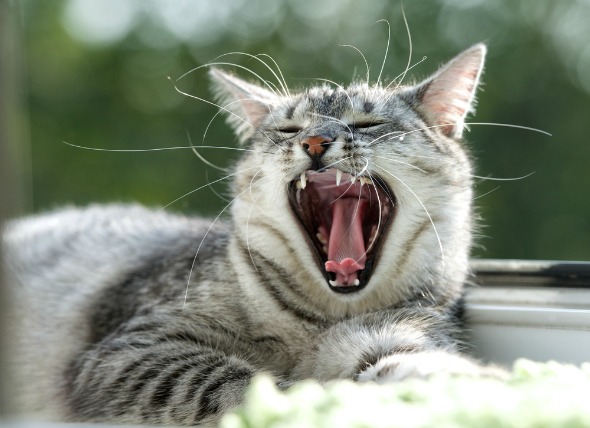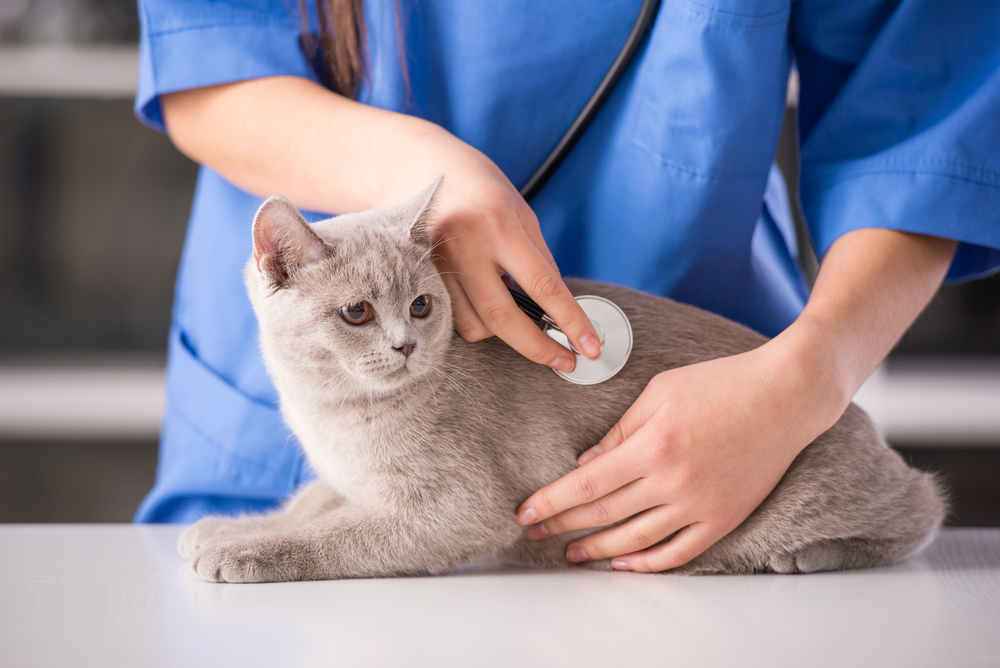

Periodontal disease is an inflammation of some or all of a tooth’s deep supporting structures. It is one of the most common diseases in cats today.
If food particles and bacteria are allowed to accumulate along the cat's gumline, it can form plaque, which, when combined with saliva and minerals, will transform into calculus. This causes gum irritation and leads to an inflammatory condition called gingivitis. Gingivitis, which is evidenced by a reddening of the gums directly bordering the teeth, is considered to be an early stage of periodontal disease.
After an extended period, the calculus eventually builds up under the gum and separates it from the teeth. Spaces will form under the teeth, fostering bacterial growth. Once this happens, the cat has irreversible periodontal disease. This usually leads to bone loss, tissue destruction and pus formation in the cavities between the gum and teeth.
Periodontal disease affects both cats and dogs of all ages, though it is more common in older animals. If you would like to learn how this disease affects dogs, please visit this page in the PetMD health library.
Periodontal disease generally begins with the inflammation of one tooth, which may progress if not treated during different stages of the condition. A cat with stage 1 periodontal disease in one or more of its teeth, for example, will exhibit gingivitis without any separation of the gum and tooth. Stage 2 is characterized by a 25 percent attachment loss, while stage 3 involves a 25 to 30 percent attachment loss. In stage 4, which is also called advanced periodontitis, there is more than a 50 percent attachment loss. In the most advanced stage of the disease, the gum tissue will usually recede and the roots of the teeth will be exposed.
Periodontal disease can be caused by a variety of factors, such as the bacteria Peptostreptococcus, Actinomyces, and Porphyromonas.
The diagnosis of periodontal disease involves a number of procedures. If periodontal probing reveals more than one millimeter of distance between the gingivitis-affected gum and tooth, a cat is considered to have some form of periodontal abnormality.
X-rays are extremely important in diagnosing periodontal disease because up to 60 percent of the symptoms are hidden beneath the gum line. In the disease's early stages, X-rays will reveal loss of density and sharpness of the root socket (alveolar) margin. In more advanced stages, it will reveal loss of bone support around the root of the affected tooth.
The specific treatment for periodontal disease depends on how advanced the disease is. In the early stages, treatment is focused on controlling plaque and preventing attachment loss. This is achieved by daily brushing with “animal safe” toothpaste, professional cleansing, polishing, and the prescribed application of fluoride.
In stage 2 or 3, the treatment involves the cleansing of the space between the gums and teeth and the application of antibiotic gel to rejuvenate periodontal tissues and decrease the size of the space.
In the more advanced stages, bone replacement procedures, periodontal splinting, and guided tissue regeneration may become necessary.
Follow-up treatment for periodontal disease consists mostly of good dental care and weekly, quarterly, or half-yearly checks. Prognosis in cats will depend on how advanced the disease is, but the best way to minimize the adverse affects caused by the disease is to get an early diagnosis, adequate treatment and proper therapy.
The best prevention is to maintain good oral hygiene and to regularly brush and clean the cat's mouth and gums.
 Skin Cancer (Basal Cell Tumor) in Cats
Basal Cell Tumor in Cats
Basal cell tumor is the
Skin Cancer (Basal Cell Tumor) in Cats
Basal Cell Tumor in Cats
Basal cell tumor is the
 Fainting in Cats
Syncope in Cats
Syncope is a medical condition th
Fainting in Cats
Syncope in Cats
Syncope is a medical condition th
 Are You Ready to Have a New Cat?
Sometimes the cat appears in your house unexpectedly. Y
Are You Ready to Have a New Cat?
Sometimes the cat appears in your house unexpectedly. Y
 Skin Mite Dermatitis in Cats
Cheyletiellosis in Cats
An infestation of the Che
Skin Mite Dermatitis in Cats
Cheyletiellosis in Cats
An infestation of the Che
 False Pregnancy in Female Cats
Pseudo-pregnancy in Female Cats
A hormonal imbala
False Pregnancy in Female Cats
Pseudo-pregnancy in Female Cats
A hormonal imbala
Copyright © 2005-2016 Pet Information All Rights Reserved
Contact us: www162date@outlook.com